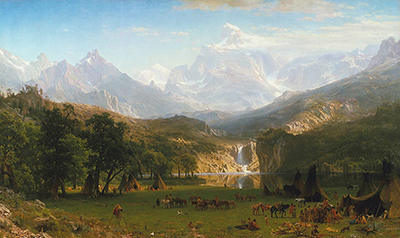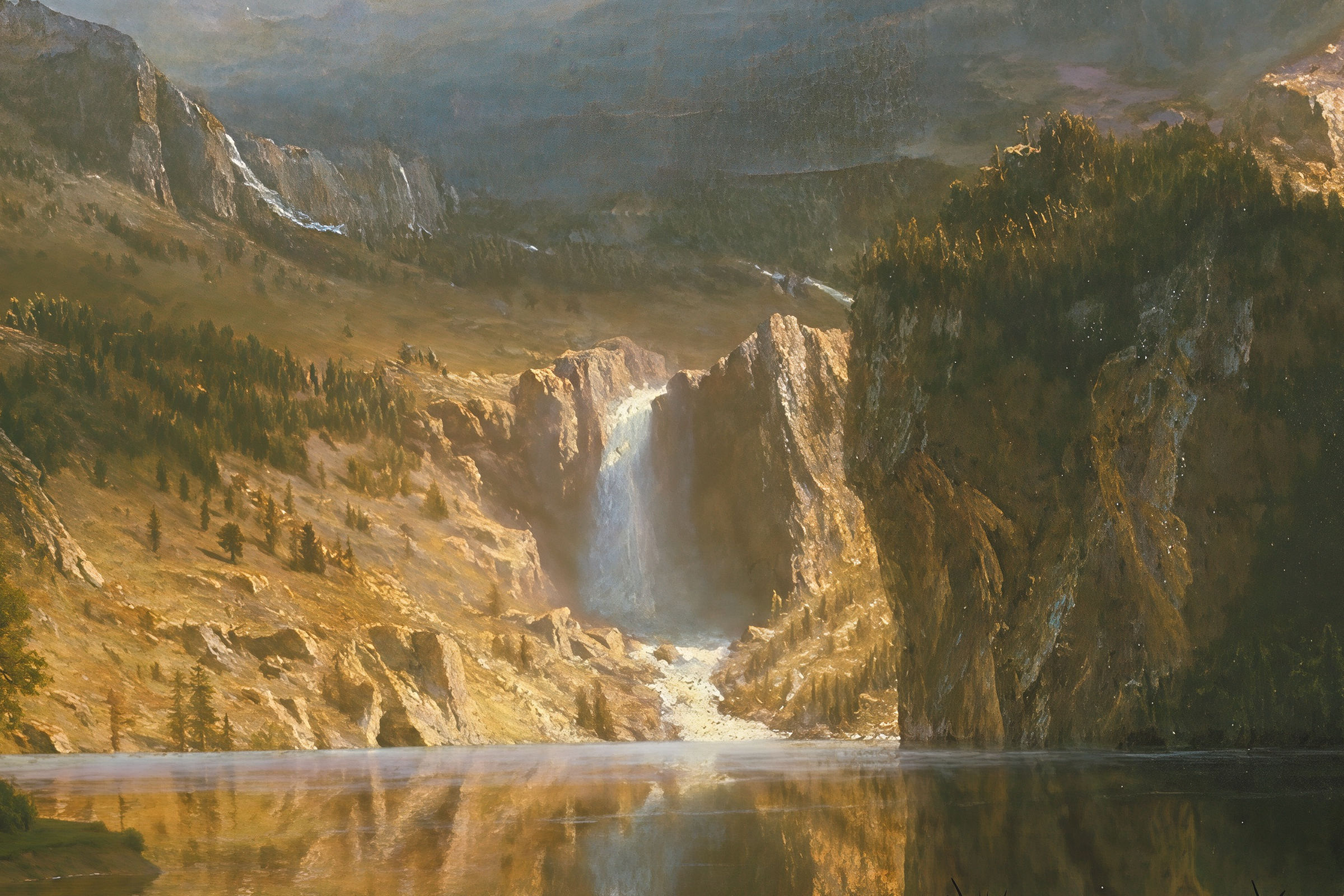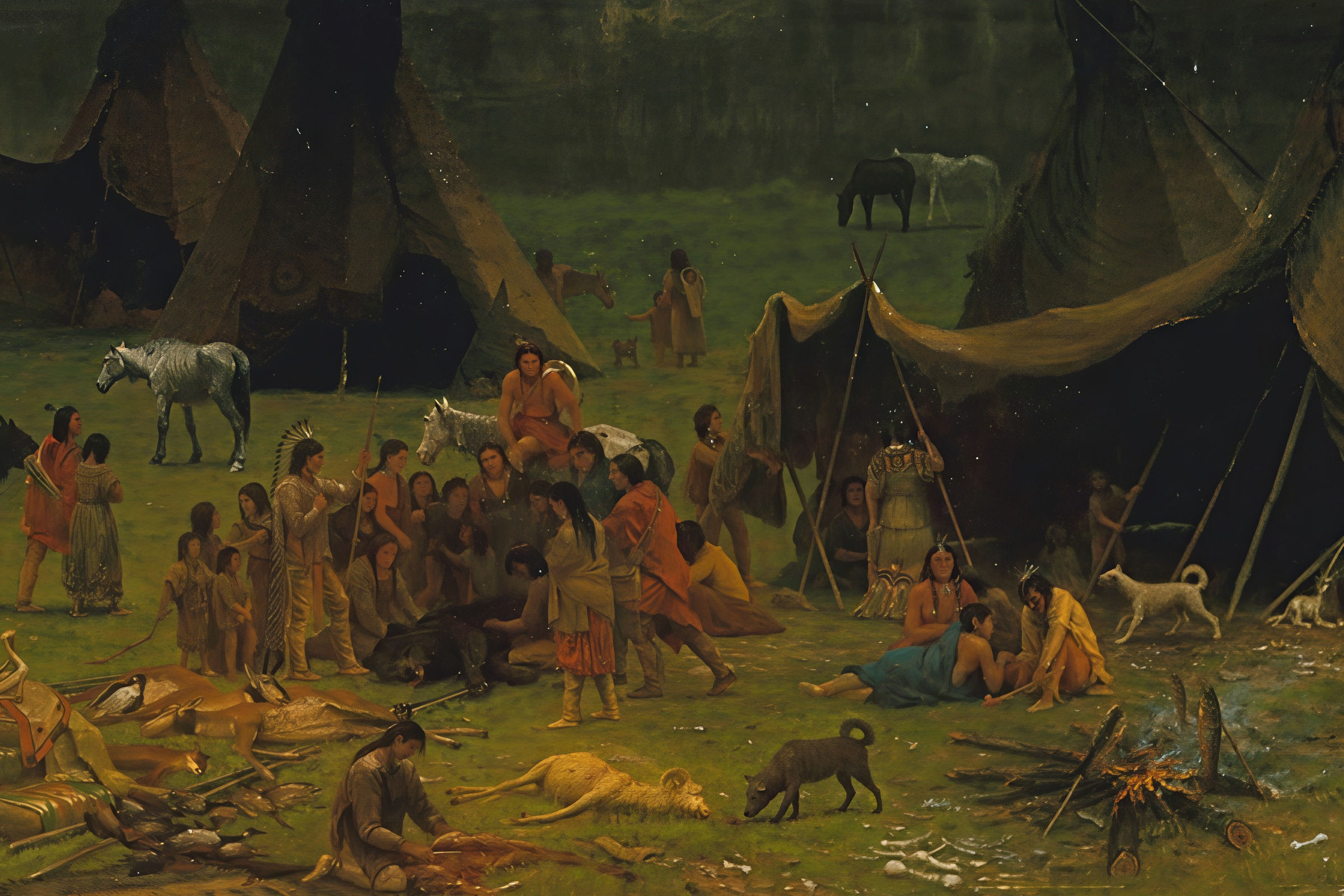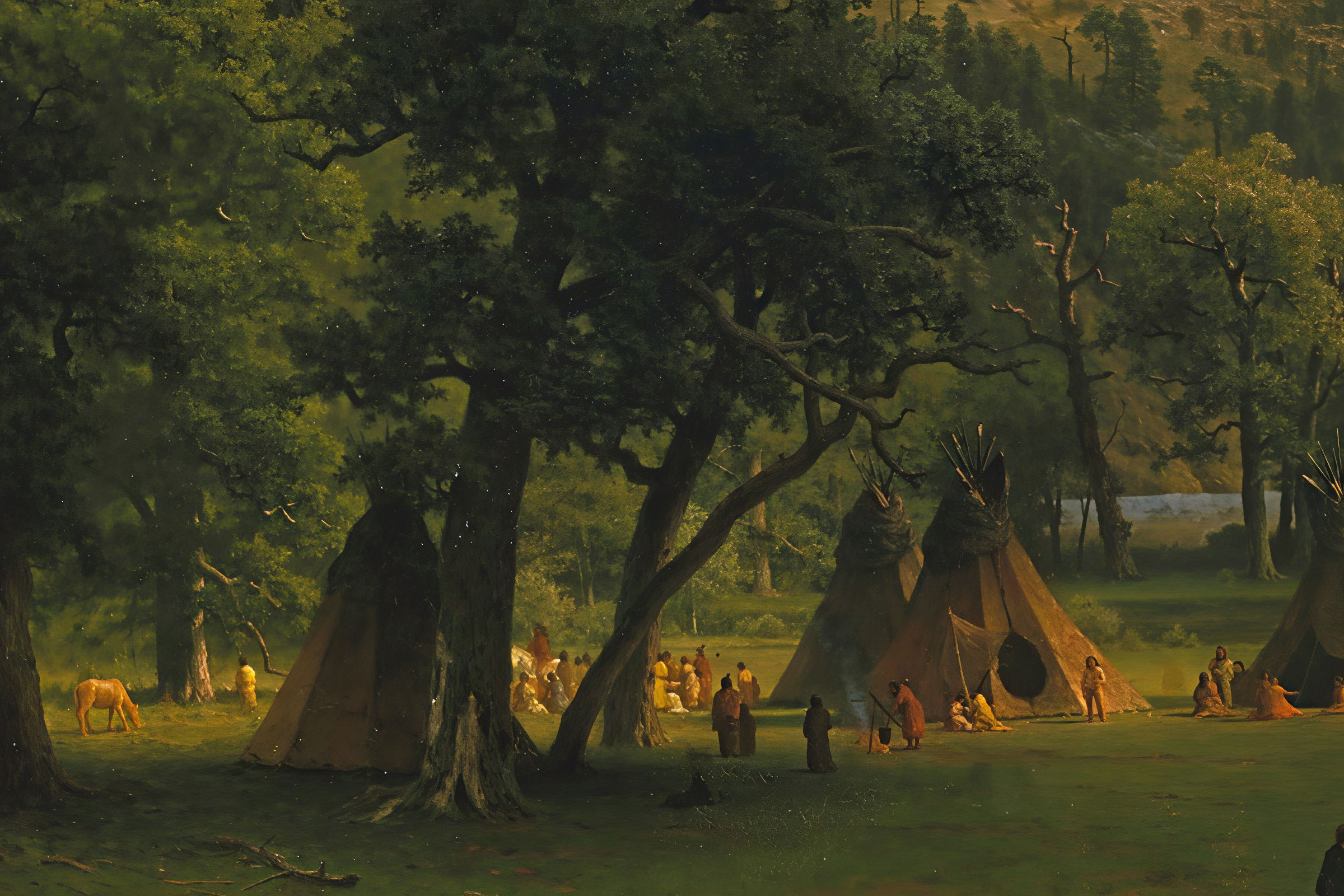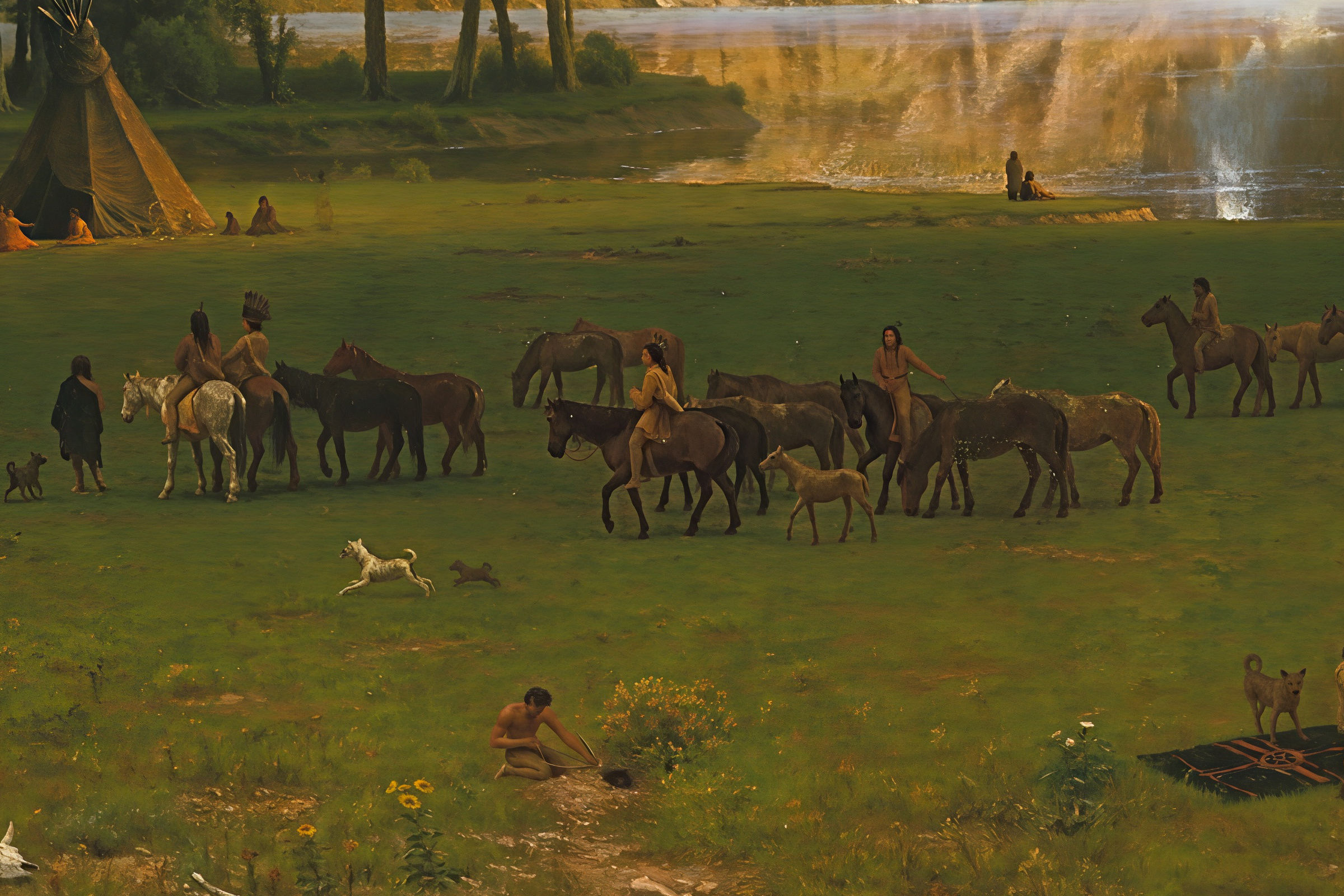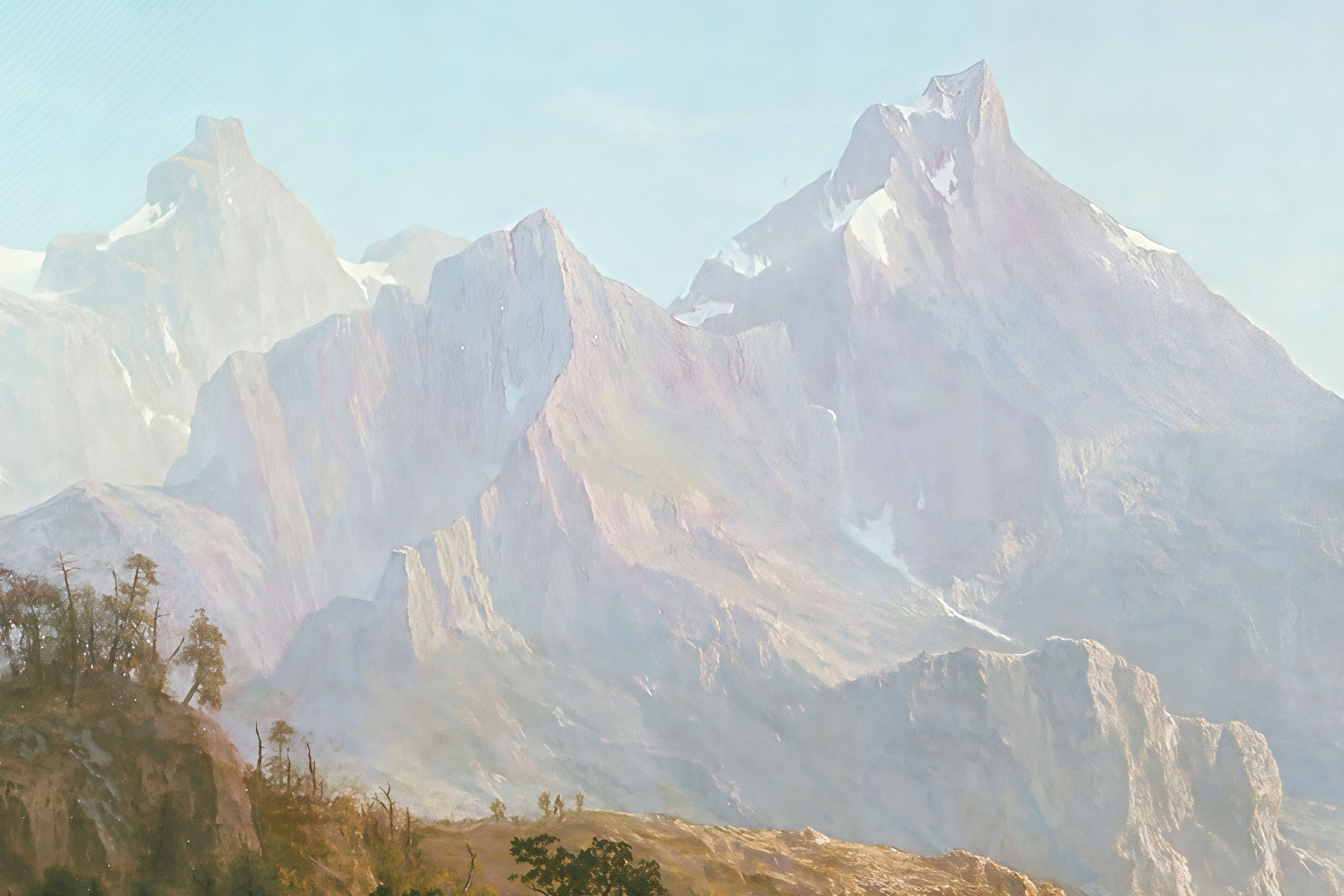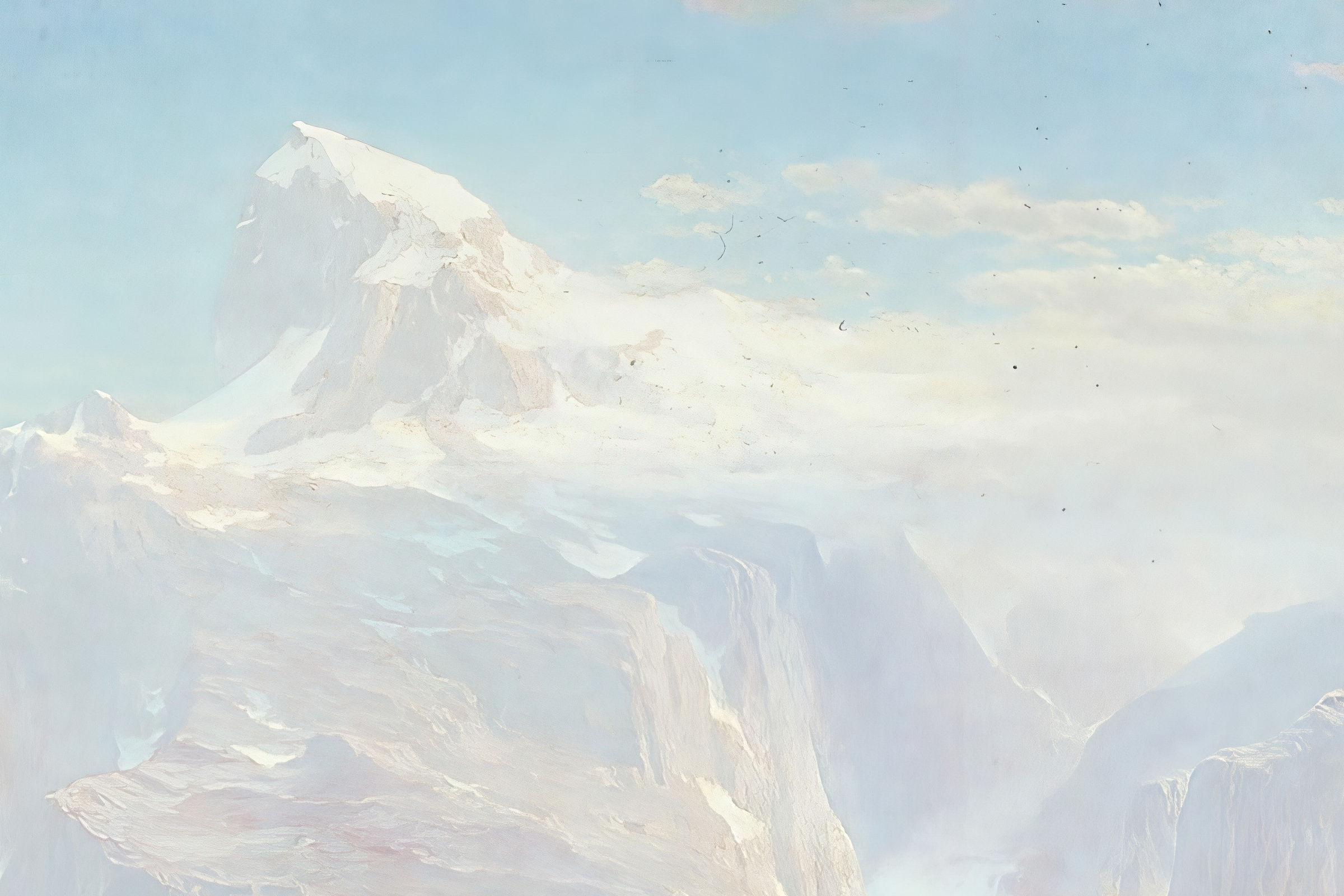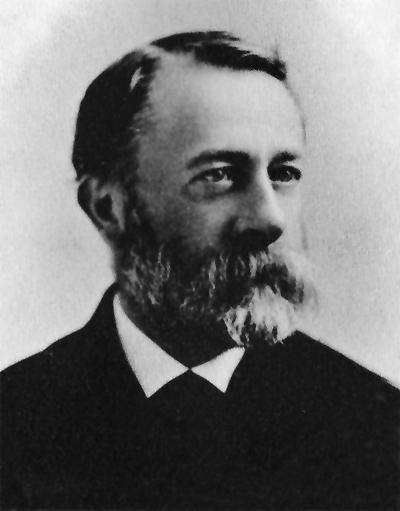When Albert Bierstadt exhibited The Rocky Mountains, Lander's Peak in 1863 it was wildly popular among both critics and the public.
Albert Bierstadt's The Rocky Mountains, Lander's Peak (1863) is one of the most influential landscape paintings in American art — a vast, theatrical vision of the West that shaped how 19th-century audiences imagined the Rocky Mountains, Indigenous life, and the promise of frontier exploration.
Created after Bierstadt travelled with the 1859 Lander Expedition, the painting combines on-site observation with dramatic, idealised effects that became his signature style.
The work's panoramic scale, sweeping light, and detailed portrayal of a Shoshone encampment made it an immediate sensation when first exhibited in New York. Today, it stands as a landmark of the Hudson River School and a key document in the visual culture of westward expansion.
This page explores the painting's historical context, geography, symbolism, Indigenous representation, and impact, while also examining how Bierstadt blended documentation with invention to create one of his most ambitious landscapes.
Large Image Gallery of Painting Details
The Landscape and Composition
The Rocky Mountains, Lander's Peak: Close to one thousand people attended the single-piece exhibition and two years later it sold for an impressive $25 000. This piece cemented Bierstadt's place as the most illustrious painter of American West landscapes through the end of the 19th century.
Bierstadt was born in Germany and moved with his family to Massachusetts when he was a child. While he spent his formative years as a painter in Europe, it was his paintings of the American West which brought him true acclaim. See also Storm in the Rocky Mountains.
In 1859 he travelled with the Honey Road Survey Party, led by Frederick W. Lander. This was his first expedition to the West. He made a huge series of sketches, upon which he based his subsequent paintings, including The Rocky Mountains, Lander’s Peak.
Shoshone Encampment and Cultural Context
The large Shoshone encampment in the foreground is one of the most elements of this painting. Rather than treating Indigenous presence as incidental, Bierstadt made it central to the scene, placing families, lodges and animals directly before the viewer. The camp provides human experience, alongside the natural beauty which sits behind in the distance.
It is important to recognise that Bierstadt's depiction blends observation with 19th-century artistic convention. He likely encountered Shoshone communities during the 1859 expedition, yet the composition follows a popular formula in American art of the period: Indigenous figures presented as noble, dignified and in tune with the landscape.
In reality, this trope would ignore some of the experiences being endured by the community at that time. This painting helps to explain how artists from the Anglosphere shaped public imagination about Indigenous cultures.
Bierstadt's Techniques and Working Method
The artist studied his landscapes in detail, focusing particularly on the flow and effect of light on all that it influenced, whilst also attempting to record the colour combinations that he encountered. These discoveries would then be expanded upon, and combined with his own imagination from the comfort of his New York studio.
One of Bierstadt's signature techniques was the use of atmospheric perspective—softening colours and reducing contrast in the distance to create a sense of vast scale. In Lander's Peak, this effect is most evident in the luminous haze that surrounds the summit and in the gradients of colour across the sky. These could be used to excite the viewer, but also to lead their eyes in the desired direction.
Large Zoomable Image of Lander's Peak
Interact with a high resolution image of Lander's Peak below, roll over the image to find zoom and scrolling options.
Influences from the 1859 Lander Expedition
Bierstadt joined the 1859 Lander Expedition, led by Frederick W. Lander. They crossed the Rocky Mountains while surveying potential routes for future westward travel. Bierstadt joined the expedition as an artist and observer, carrying out research for his future paintings.
This included gathering sketches, studies, and possibly even some photographs. As someone who who merge reality with imagination, his studies could help a good number of different paintings upon his return to his studio.
Lander's party travelled through the Wind River Range, where the dramatic peaks and deep valleys left a lasting impression on Bierstadt. His diaries and sketches from the journey revealed how the mountain light and the scale of the terrain were particularly memorable, and these aspects would carry over into his drawings, and then his final paintings.
The expedition also brought him into contact with Shoshone communities, whose presence added a human dimension to the dramatic scenery, whilst also helping to add a sense of scale between foreground and background which was helpful to viewers unfamiliar with this type of environment.
Geographical Setting of Lander Peak
Lander Peak is located in the Wind River Range of western Wyoming. It is well known for its glacial valleys, alpine lakes, and jagged granite summits.
Standing at over 10,000 feet, the peak stands prominently and was an easy choice for Bierstadt to make use of in his work, even if he chose to amend reality within his artistic flourishes. Its dramatic slopes and clear mountain light made it an ideal subject for Bierstadt's romantic approach.
Bierstadt's painting is idealised, and this precise look cannot be seen in real life - it was an adaptation of reality into the romanticised world of this painter. The terrain in the painting combines several vantage points into a single dramatic panorama in an an attempt to really underline and celebrate certain aspects of this environment. Modern photographs of the area show a closer, more compact arrangement of peaks, underscoring Bierstadt's desire to convey the emotional rather than strictly topographical truth of the scene.
Early Exhibition and Critical Reception (1863)
When first exhibited in New York in 1863, The Rocky Mountains, Lander's Peak was presented entirely on its own, with a special setting designed to show of its extraordinary qualities - this promotion may have helped the piece to achieve such a high price once a buyer was later found.
The excitement around this piece was also increased by paid entry for this small exhibition, helping to underline its special qualities. Crowds were astonished by the painting's scale and its dedication to the American West.
Critics generally praised the work, calling it one of the most ambitious landscape paintings ever produced by an American artist. Writers highlighted its clarity and the sense of national pride it evoked during the Civil War years. There were some, however, who were uncomfortable with the choice by the artist to produce an ideal image, rather than replicating reality as closely as possible, but this was entirely typical of Bierstadt's work.
Market Value and Collecting History
The painting's success brought financial reward for an artist growing his reputation. Lander's Peak was purchased soon after its 1863 exhibition by James McHenry, who was a significant financial speculator and collector.
He paid $25,000 for Lander's Peak, which was a large fee within the American art market at that time. The knock-on effect from this sale was also to increase interest in all his future works.
The fame of this work, alongside its identically named sister-piece, was increased by a number of engravings based on it which followed in the 19th century. The original was also eventually acquired by the Met, where it can still be found today, helping to promote it as a major contribution within Bierstadt's career.
Comparison with Other Bierstadt Works
Albert Bierstadt produced a huge body of landscapes across his career and Lander's Peak stands out particuarly for its carefully orchestrated drama. Works such as Among the Sierra Nevada (1868) and Storm in the Rocky Mountains, Mount Rosalie (1866) share a similar balance of space and light, though without the Indigenous presence in quite the same manner as in this painting.
Later works, including View of Donner Lake, Estes Park, and The Oregon Trail, would involve a switch in atmosphere and colour. Compared to these, Lander's Peak retains a crispness and clarity associated with Bierstadt's early maturity.
One can argue that it in this painting that Bierstadt managed to combine perfectly the sublime American landscape, the cultural narratives of the West, and the Romantic style which drove much of his signature style. It is an entirely complete piece, perfectly balanced in every way.
Timeline of Albert Bierstadt's Most Famous Works
Where Is the Painting Today?
The Rocky Mountains, Lander's Peak can be found at The Metropolitan Museum of Art in New York, in the museum's American Wing. The Met acquired the painting in the early 20th century, recognising its significance within the genre of American landscape painting, and specifically the work of the Hudson River School. It is generally displayed alongside other related works devoted to the American West, from around the same period as Bierstadt.
Summary
The mountain featured in this piece was named Lander's Peak at Bierstadt's behest after Lander was killed in the Civil War. It is part of what is now the Wyoming Range. Few artists have done more in promoting the beauty of the American landscape, with Ansel Adams and Georgia O'Keeffe being two other notable contributors.
Bierstadt's work was popular with Americans of the time as it showed an idealised version of the American West that was majestic but still wild. Influenced by his fellows in the Hudson River School, Bierstadt used soft, glowing light that highlighted the natural beauty of the landscapes he painted.
In this piece he has also manipulated the landscape itself to add drama rather than painting the mountain range exactly as it appeared. This piece has often been compared to The Heart of the Andes, a similar painting of the mountain range in South America by Bierstadt's rival Frederic Edwin Church.
The two artists' styles share many similarities and both pieces are painted on huge canvases just over 3 metres wide. They now hang in the same gallery in The Metropolitan Museum of Art on Fifth Avenue in New York.



